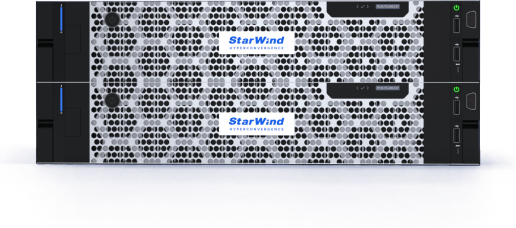Cut costs, simplify management, and improve scalability with HCI — see how these three benefits help modern IT teams do more.
We’ve all heard the expression “time is money,” and this couldn’t be truer when discussing IT. Most businesses’ success and efficiency heavily depend on their IT infrastructure. We all want our applications to run as fast as possible and be deployed in minutes. Moreover, the more data you have, the worse the consequences are in the event of its loss. So, companies need to recover all their data as quickly as possible if something happens. This is known as Recovery Point Objective (RPO) and Recovery Time Objective (RTO), and the shorter these are, the better for your company. As your business grows, you need to provision the right amount of storage and capacity, and if you need to open a branch office, you want to deploy an IT infrastructure quickly, not over months.
Traditional IT infrastructures with segregated components like compute nodes, storage nodes, and networking equipment pose a challenge to these needs. These systems often require more time for maintenance, are more complex to manage, and require significant upfront investment compared to modern solutions. Hyperconvergence addresses this by integrating all components: compute, storage, networking, and virtualization resources – into a single, software-defined platform under a unified management tool. This integration simplifies management, reduces costs, and enhances scalability. It’s more than just a buzzword; it offers tangible benefits for system administrators and significant advantages for businesses looking to optimize their IT infrastructure for hybrid cloud workloads.
More Time for Your Business, Less Time for IT Infrastructure Management
Consider the task of rolling out a virtual machine (VM). Hyperconverged solutions allow you to manage your VMs without dealing with each infrastructure component separately. You don’t have to manage storage, compute nodes, or networking individually; you simply manage the VM, and the hyperconverged infrastructure (HCI) handles the rest. You can spin up a VM in a matter of minutes. This simplified management translates to significant time savings for IT staff, allowing them to focus on strategic initiatives rather than routine maintenance tasks.
The Role of Software-Defined Storage (SDS) in Simplifying Management
Software-defined storage (SDS) is a critical component of HCI that significantly simplifies management. SDS abstracts the underlying storage hardware, allowing for policy-driven management of data. This abstraction enables automation of storage tasks, such as provisioning, data placement, and data protection, reducing the administrative burden and freeing up IT staff to focus on more strategic initiatives.
Maintaining IT infrastructure is a constant requirement, whether it involves hardware or software upgrades, maintenance, or issue resolution. With hyperconverged infrastructure, performing maintenance on a node without disrupting production is much easier. You can put a node into maintenance, perform the necessary tasks, and bring it back online without interrupting applications. This capability is invaluable, as your applications remain running, and you don’t have to worry about infrastructure maintenance.
Improved RTO and RPO
In today’s world, even the smallest companies rely heavily on IT resources that must be available 24/7. Downtime, even for short periods, can harm your business, potentially leading to canceled product launches or service delivery disruptions. Therefore, maintaining constant infrastructure uptime and ensuring robust data protection are critical.
Hyperconverged infrastructure solutions are designed to address this by including comprehensive backup and recovery capabilities that enable meeting stringent RTO and RPO requirements. Synchronous replication is one such tool, ideal for high-end transactional applications that require instant failover in case of primary node failure. With synchronous replication, your data remains available, protecting you from production interruptions.
Better Flexibility and Faster Deployment
Hyperconvergence allows for granular scaling by adding more nodes, enabling you to purchase only what you need when you need it, without overspending or rebuilding your IT infrastructure. Unlike integrated systems that often demand large upfront investments, hyperconverged solutions offer a much smaller step size. This smaller step size translates to lower upfront costs and more efficient resource utilization.
Adding new nodes to a hyperconverged infrastructure is straightforward. HCI is also an excellent solution for building a new IT infrastructure from scratch, such as when opening a branch office. A proper HCI solution provides a wealth of resources managed from a single interface. Network, storage, and compute resources can be deployed at a new site and become operational immediately.
Furthermore, hyperconverged systems are designed to be self-contained and remotely managed, making them ideal for hosting VMs at branch offices. This means you don’t need specialized IT staff at these locations to perform manual operations, reducing expenses.
Conclusion
Hyperconverged infrastructure is not a cure-all, but it offers significant benefits to your business. However, it’s important to consider factors like initial investment, the need for specialized skills during implementation, and ensuring compatibility with existing infrastructure. Careful planning and assessment of your specific business needs are crucial for successful HCI adoption.
It is a good option if you want to minimize effort on IT infrastructure management and maintenance. It’s also a sound strategy for ensuring 24/7 business operation without building a dedicated, complex backup infrastructure. Once you deploy an HCI solution, you can focus on your business instead of worrying about its sizing.


